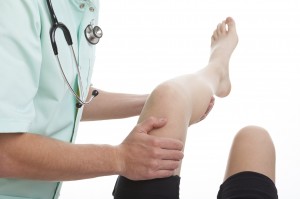CDC Reports that Falling is a Significant Risk for Arthritic Adults
 The US Centers for Disease Control and Prevention (CDC) just sent out a report stating that adults over the age of 50 are significantly more likely to incur serious injuries from falling if they have arthritis. This is disconcerting news, especially given the number of people afflicted by some form of arthritis in the US. So, the CDC also released information showing how fall-prevention programs can reduce the risk of falling by nearly 30 percent.
The US Centers for Disease Control and Prevention (CDC) just sent out a report stating that adults over the age of 50 are significantly more likely to incur serious injuries from falling if they have arthritis. This is disconcerting news, especially given the number of people afflicted by some form of arthritis in the US. So, the CDC also released information showing how fall-prevention programs can reduce the risk of falling by nearly 30 percent.
Statistically speaking, falling is the number one cause of injury-related illness and death in the country. A fall could result in:
- Brain injuries
- Hip fractures
- Reduced functional ability
- A decline in physical and social activities
Specialists have found that one of the leading risk factors for falls is poor neuromuscular ability. This happens to be a common trait amongst patients with advanced forms of arthritis. The current prediction is that nearly 52 percent of the American adult population has some type of arthritis.
High Risk of Falling for Many Adults
“It is a huge problem. We know that arthritis leads to poor neuromuscular function – poor balance and walking speed, and these contribute to the amount of falls among people with arthritis,” noted Kamil E. Barbour PhD, an epidemiologist in the Arthritis Program at the CDC.
These crucial findings are based on telephone surveys that were conducted two years ago with more than 330,000 American participants (aged 45 and up). Each participant was asked to provide the following details:
- Their age
- If they had been diagnosed with a condition like arthritis
- If they had fallen at all in the last year
- If they had fallen, had they incurred any injuries
(Quick Fact: The research team for this arthritis research study categorized the results by state.)
There are 3 key factors to take away from their findings:
- Arthritic adults were 30 percent more likely to have fallen at least once in the previous year compared to those without arthritis.
- Arthritic adults were nearly 2.5 times as likely to have fallen more than once compared to adults without arthritis.
- Arthritic adults were 2.5 times more likely to have suffered some type of injury as a result of a fall than those without arthritis.
Taking a Tumble can Cost a Bundle
“Not only are these people falling but it appears a large percentage of them are being injured, and these are big injuries. These are hip fractures and brain injuries and physical and functional declines,” explained Dr. Barbour. “And if you fall, it can make you scared to participate in activities, and [it can] have psychological implications, too, as well as also being costly. It’s a huge burden.”
Experts estimate that these types of falls are incurring at least $30 billion in medical fees each year. That being said, there are some steps that people living with arthritis can take to reduce their risk of falling.
The research team for this arthritis clinical study recommend spending at least 50 hours a year practicing activities designed to improve overall balance. These routines should be designed so that you’re able elevate the level of difficulty as you become more skilled over time. This strength and conditioning approach is the best method for preventing falls over the long run.